The cat is an extremely contradictory symbol, the embodiment of beauty, grace, independence, dexterity and invulnerability (the last two meanings are related to its amazing vitality and the ability to always land on the feet), but at the same time the personification of lasciviousness, cunning and anger. With regard to a person, cat qualities often acquire a negative connotation: an incorrect man is usually likened to a lecherous cat, and a windy woman to a lustful cat. When an angry woman launches her sharpened natural weapon - long nails, she is compared to an angry cat.
It has long been noticed that a graceful animal likes to walk with the moon, therefore in mythology it takes place next to the ancient goddesses of the moon: Greek Artemis, Roman Diana and Scandinavian Freyja. This is reflected in the fine art of the Renaissance, where the Freyja cart is driven by two black cats.
In the religion of Ancient Egypt there was a cult of Bastet, the moon goddess of beauty, portrayed in the image of a woman with a cat's head. In Bubastis, the center of worship of the goddess Bastet, tens of thousands of Nubian cats lived, her sacred animals. The Egyptians cherished them and cherished them. For the offense inflicted on the divine animal, the guilty person answered with his purse, and for killing the cat - with his own life.
The Egyptians experienced the death of one of the cats as a national tragedy. The masters, or rather say, the servants of the animal that has died, as a sign of mourning, shaved their brows and, tearing themselves with bitter tears, carried the cat's corpse to the temple. The priests of Bastet embalmed the deceased (I suppose, not for free!) And buried her in a sacred cat's cemetery. A dead mouse was placed in the grave of the deceased, so that the cat had something to enjoy in the next world, and after the funeral a monument was erected on a sorrowful hillock - a small stone statue. Modern archaeologists have discovered in Bubastis about one million (!) Such sculptures. Another similar cemetery was discovered during excavations in Upper Egypt, near the village of Beni-Ha-san. Here, archaeologists counted about 180,000 ancient burials. It is not hard to imagine what feelings they experienced when it became clear that most of the animals were resting in gold and silver boxes inlaid with precious stones!
In the end, the ardent love of the Egyptians for cats, which reached a servile adoration, they also ruined. In 525 BC. in Egypt invaded the Persian army of King Cambyses. Persians, well studied local customs, caught during the campaign a lot of cats and in the decisive battle at Pelusia covered them as living shields. Seeing the Persians, hung with cats, the Egyptian archers, fearing to hurt their heart-rending pets, refused to shoot at the enemy. So the cat's fans became the pathetic slaves of the Persians.
Practical Romans, who always despised religious fanaticism in all its manifestations, found the best use of cats, making them hunters for domestic mice. At the same time, the proud Romans were impressed by the independent nature of the graceful animal, so in Rome, the cat became the emblem of freedom and the companion of the goddess Libertas (personified freedom).
If in ancient Egypt cats were deified, the superstitious inhabitants of Christian Europe hit the other extreme, taking cats for witches, and cats for werewolves and servants of Satan himself. Double-minded obscurantism Sprenger and Institoris in their crazy treat "Hammer of Witches" managed to "scientifically" justify the ability of witches to reincarnate in black cats. For this type of werewolves, even a special term was invented-the elurant-ripia. Oils in the fire poured and the bellicose Roman Pope Julius II (1 SOS-IS 13), called for a "crusade" against black cats. The persecution of cats began throughout Europe, and only in England, where the powerful King Henry VIII (1509-1547), wishing to free himself from the oppressive care of the Vatican, began the reformation of the church, the black cats felt completely safe.
From superstitious Christians, by the way, did not fall behind and no less superstitious Muslims, who in every cat imagined the reincarnated evil genie. In the end, each people remained at their opinion: if for most Europeans, Arabs and Japanese the black cat is a harbinger of trouble, then for the English and Americans it is quite the opposite. English sailors, for example, assured that the ship with a black cat on board is not afraid of any storm.
In Russia, black cats were treated with caution, but the massive persecution of them did not suit. As for cats of other colors, they felt sincere sympathy for them. Murkam and Murzik often attributed the gift of clairvoyance. Indeed, many cases are known when cats with anxious meowing or restless behavior warned their masters about impending disaster: fire, flood, earthquake, etc. It is not surprising to be surprised, since animals still keep that invisible connection with the mother-nature, which a man, her ungrateful child, has long ago rejected and lost.
Ancient Egypt was an agrarian civilization, therefore cat , which destroyed mice and rats who had encroached on their reserves, and also posed a threat to the life of snakes, was of such value that over time it was elevated to the rank of sacred animal. Only the pharaoh could consider cats his property, so they were all under his protection and the murder of either of them was punishable by death. At the same time for the Egyptian legislation there was no difference in what caused the death cats - accident or intentional actions.According to Herodotus, during the fire, the Egyptians had to stand around the burning building to prevent the cat from leaping into the fire. It was believed that the animal could have rushed into the house to check if the kittens were there.
Unlike people, cats are better seen at night. This animal also has more developed lateral vision, but fluffy creatures are inferior to people in perceiving the color spectrum and the clarity of forms.
Night predators
Cats are animals twilight, that is, they are more active during the evening and morning dusk. This explains the fact that they are much better than people see in the dark. In the mesh shell of the cat's eye, 6-8 times more rods are found that are sensitive to muted light, compared to the human organ of vision. Such a sight is cats developed due to their lifestyle and the need to survive in the wild nature.
Another feature of the cat's vision is the ability of the pupil to strongly narrow and widen. On the bright light of The cat's eye shrinks to the size of a thin thread, and when it's dimly lit, it expands, almost completely covering the cornea. At dusk, this dilated pupil cats can better absorb light.
In addition, the elliptical shape of the cat's eye, the enlarged cornea and the lining layer on the back of the eyeball that reflects light back to the retina, collect more light. Because of this features of the structure organ of vision in cats in the dark glowing eyes.
The mirror of the cat's eye can change the length of the light wave perceived by the cat, so that the animal sees the prey and other objects more clearly against the background of the night sky. Light-sensitive sticks also allow cats it is better to see moving objects in the dark.
Vision in humans and in cats
The field of vision in cats is wider than in humans. While in humans it is 180 degrees, these predators have 200 degrees. Lateral vision in cats is also much better than in humans. It is important for them to notice a mouse or toy in the corner of the room.
Unlike humans, cats do not see objects clearly in the distance. For example, a person with normal vision in the daylight clearly sees large objects located at a distance of 70 meters. The cat will see these objects blurred. Her vision allows her to clearly see them at a distance of up to 7 meters. The receptors of perception of color and details, cones, in the human organ of vision are greater than in cats. The same applies to the perception of movement in daylight, which in humans is much better developed than that of the smaller brothers.
Cats perceive colors differently. Scientists believed earlier that cats are dichromates, that is, they do not perceive red and green shades. As it turned out later, they still see some green tones.
But the night vision of cats, where the main receptors are rods, small in comparison with people the number of cones does not affect. And although cats can not see in total haze, they need only a sixth of the light necessary for people to clearly distinguish objects.
Cats do not see objects that are under them nose . In this sense they are farsighted creatures. They sniff the food next to the muzzle, but they will take some time to find it.
In ancient Egypt, the god of death was considered Nephthys. Many gods participated in the burial ritual of the body, escorting the human soul to the underworld-the Duat and its further abode there. The god of the kingdom of the dead was Osiris.
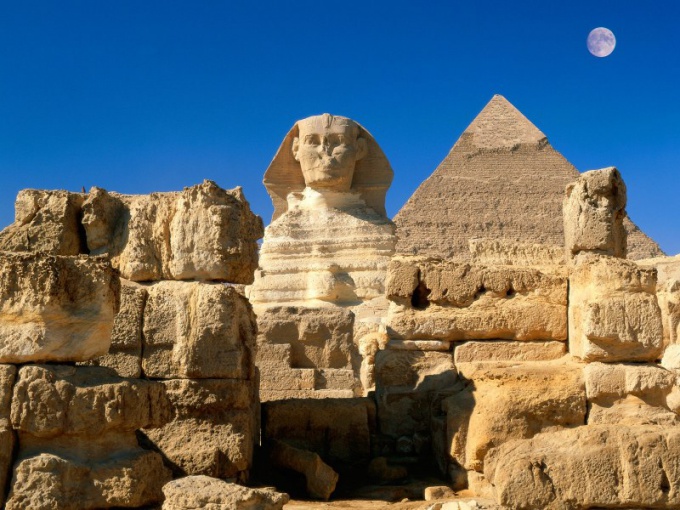
Goddess of death
The god of death in ancient Egypt was Nephthys. She personified the process of dying a person, accompanied by his last moments of life. Nephthys was always portrayed next to Isis as an assistant and the opposite. Its name in the ancient Egyptian language sounds like Nebethet, which means "mistress of the monastery." Nephthyde personified infertility, inferiority. According to the surviving texts, Nephthys accompanied the god Ra at night, that is, traveled with him in the afterlife.
Gods associated with the cult of death
The functions of one god often passed to another god with the emergence of the latter in the culture of the population. It is known that in Ancient Memories, as the king of the underworld, Anubis was originally worshiped. But with the advent of the cult of Osiris, Anubis lost some of his functions. Because of this, it is impossible to say exactly which god in Ancient Egypt was the god of death. At one time and in different cities, different gods personified the same thing.
In Memphis, Sokar was revered as the god of resting souls, who served as a guard guarding the entrance to the underworld. Represented in the form of a falcon. Here was the place of veneration of another Egyptian god - Anubis. He was considered the god of the dead, the patron of necropolises, embalming, one of the judges of the kingdom of the dead. As for the other capital of Ancient Egypt, the goddess Mertseger was worshiped in Thebes as the patroness of the necropolis, the dead people and the living, who by virtue of their profession were forced to live in the "city of the dead."
Hentimentiu is the god of dead people, portrayed in the guise of a black dog. Khentimentiu from the ancient Egyptian language is translated as "The first of the Western". The West in Ancient Egypt was associated with the afterlife. The place of veneration for Hentimentiu was Abydos. Later, the name of this god became one of the names of Osiris. In Abydos there was another god, Upuaut, who was associated with faith in the afterlife, he belonged to the suite of Osiris.
Osiris is the king of the underworld, the god of regeneration and nature. He is one of the few gods who are directly related to death. Most other gods had only a part of their duties in the next world. For example, God Toth served as a judge and secretary, writing down the words of human souls and the sentence of Osiris. Although He was revered as a god of wisdom, eloquence, science.
God Sepa was closely associated with the cult of the dead, and it was sometimes connected with the image of Osiris. Sepa was represented in the guise of a poisonous centipede.
Maat participated in the trial of the human soul in the afterlife. Her pen was placed on one bowl of scales of justice, the heart of a man on another bowl. If the heart outweighed the cup, the soul was considered a sinful and Maat devoured it.
Related Videos
Since ancient times, people worshiped certain animals, which are totems for them. The connection of people with the animal world was so close that it existed in different epochs, passing from one generation to another. For example, it was in ancient Egypt.
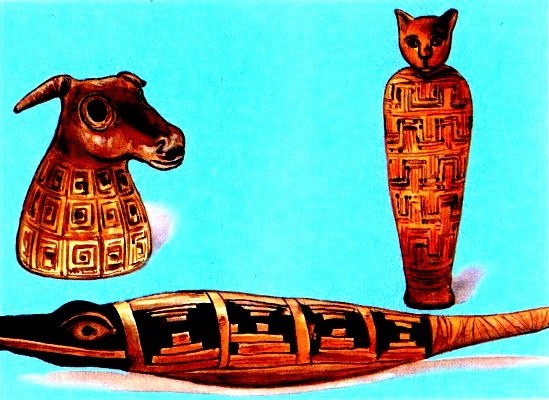
Instructions
In the original world order, all the available deities were identified with the Egyptians with animals and were depicted only in their guises. A little later, some gods began to be portrayed by Egyptians in zoomorphic forms, ie. as people-animals (for example, with the body of a lion and the head of a person). It is curious that the ancient Egyptians never identified the animals themselves with the gods and did not consider them as supreme powers. An exception can be called only those cases when a particular animal was considered to be the "embodiment of the soul" of one or another deity, for example, a black bull named Mnevis, who shares similarities with a bull named Apis.
Animals that the ancient Egyptians revered were diverse: they are birds, and ungulates, and reptiles, and mammals, and even insects. For example, ancient people had cults of bull, falcon, cat, kite, ibis, crocodile and even a scarab beetle. It often happened that a particular sacred animal, revered by some Egyptians, was not at all esteemed by others. In this case, sacred animals could be killed, which often entailed hostility between residents of certain localities and territories. By the way, the sacred birds were always banned hunting, and lions only on holidays related to the goddess Bast, revered by the Egyptians.
The cult of sacred cows and bulls was associated with the fact that these animals helped people in agricultural work - they were plowed on the bulls for days and nights. These animals represented fertility and agriculture. The most revered bull was Apis. The Egyptians believed that he fertilized the Celestial Cow which brings the golden calf to the world - the Sun. Among the cult of mythical sacred birds, the most revered were the Great Gogotun and Vienna. Of the really existing birds, the falcon, the kite and the ibis were sacred. Crocodiles Egyptians worshiped mainly in Thebes and in Fayum (Libyan desert). These reptiles personified the god of the Nile waters - Sebek. The Egyptians believed that crocodiles can control the spills of rivers that bring fertile silt to their land.
Cats were sacred animals everywhere and were revered by ancient Egyptians everywhere, and in particular in Bubastis. It was believed that the cat is the goddess Bast. The veneration of lions was based on the power of the goddess-lioness and symbolized the power of the pharaoh and the power of the goddess Sokhmet. Pigs in ancient Egypt were considered unclean animals, associated with Seth, but later they began to compare with the sky. Some residents revered them. Honoring the hippopotamus was associated with the cult of Taurt, but this cult was never widely popular. Jackals in Ancient Egypt were associated with the god Anubis, with the desert. Dung scarab beetle was also considered a sacred animal. His cult was associated with the cult of Khepri. The Egyptians believed that these beetles could spontaneously germinate themselves. Images of these insects served as amulets, protecting people from evil and poisonous bites.
Despite their worship of animals, some of them had to still be killed. For example, in some territories of Ancient Egypt, the inhabitants had to kill crocodiles. And the blame itself was sacred animals: crocodiles were bred so much that they began to pose a real threat to the lives of people and other sacred animals, such as bulls and cows. It is curious that the Egyptians buried the dead sacred animal with all the honors: the animal was embalmed, placed in a sarcophagus and was buried in the temples. For example, dead cats were buried in special sacred tombs in Bubastis, bulls were buried in the place where they died, and dead cows were generally thrown into the Nile River.
Cats see the world not quite as people see it. In conditions of poor illumination, members of the cat family see the objects around them better than people. However, with good lighting, the cat's eye details are noticeably worse than the human.
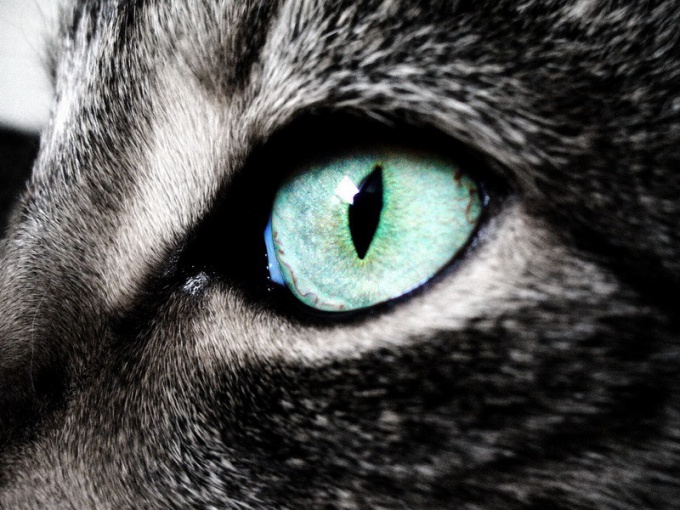
The eyes of the cat are relatively close together, so each eye sees about the same picture. The brain imposes one image on another, thereby giving a three-dimensional view of the surrounding world - this effect is called binocular vision.
As for cows, horses and other animals whose eyes are planted on both sides of the head, they see two independent pictures , which are superimposed on each other only slightly. That is, the effect of stereoscopic vision here and does not smell.
Some Siamese cats have problems with imaging, which is due to a defect in the transmission of nerve impulses from the eye to the brain. This leads to the appearance of a so-called double vision. To correct the effect, the cat has to mow eyes.
Previously, it was believed that felines see the color only in gray tones, but as a result of a number of studies this statement was disproved. A limited number of nerve endings of the conical shape in the retina of the cat's eyes still gives their owners a certain degree of color vision. The eyes of cats are sensitive to blue and green, but do not perceive red. So the sight of our tailed and mustachioed pets though color, but not as perfect as in humans.
Tip 6: Why believe that black cats bring misfortune
What brings a black cat - bad luck or luck? All this depends, first of all, on the signs, superstitions and prejudices that people of different countries believe. But where did this negative glory come from and do we really expect the black cat to be in trouble? This is worth considering.
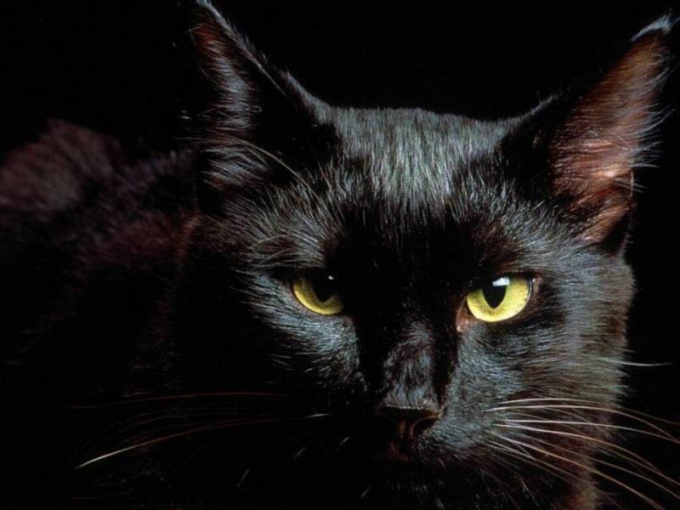
What does the black cat symbolize in different cultures and myths?
Since the Middle Ages, a black cat is considered the main symbol of misfortune. This view is still held by residents of the United States, India, China and many European countries. For centuries, black cats have been credited with witchcraft and a connection with evil spirits.
Thus, for cats, the title of a magical animal with supernormal abilities was strengthened, and people tried to use them in almost all rituals.
In the people there was an opinion that witches turned into these animals. And in 1484, Pope Innocent VIII in one of his speeches called black cats pagan beasts, who are in collusion with the devil himself. It is because of this from the 14th century that the Inquisition began to burn unfortunate animals at the stake.
However, there are also conflicting opinions. So, for example, in the UK or Japan meeting with a black cat promises good luck. In Scotland, this animal, sitting on the porch, foreshadows wealth and prosperity.
And in Germany there are at the same time two beliefs: if a black cat passes your way from right to left, then it's in trouble, if from left to right - fortunately.
Black cat as a symbol of luck originates from Ancient Egypt. It was there that it was believed that cats are sacred animals and, together with themselves, bring grace and peace to the house.
Debunking the myth "a black cat for misfortune"
To completely dispel the myth around the negative aura of a black cat, it is necessary to understand its origin. In fact, this coloring of this animal is associated with a gene mutation.
Initially, purely black cats were very rare to be met, but over time, due to the gradual pollution of the atmosphere, there was a failure at the gene level. In connection with the mutation, the main pigment, which is responsible for coloring the animal - melanin, is practically not distributed over the cat's fur, which leads to black color.
After such an explanation, it is unlikely that a black cat can be called a source of evil. However, this does not prevent you from believing in signs and miracles.
Signs of different peoples associated with a black cat
Here are some of the beliefs and signs associated with the black cat:
The alien cat in the house - to trouble (Russian folk sign).
Before settling in a new hut on the first night you need to let in the black cock and chicken, and on the second black cat and cat (Russian folk belief).
A black cat that will dream the night before Christmas, promises a disease (Russian folk sign).
Demons tempt the saints, being in the form of black cats (from the works of medieval monks). Black cat runs to you "in the bosom" or in the direction of the fastener on your clothes. Otherwise, you should not panic, you can safely continue the path.
There are also classical methods of neutralizing this sign - in particular, to avoid possible trouble, it is enough to spit three times over the left shoulder. Alternatively, you can fold the feces or hold on to the button. In extreme cases, you can always wait until some bad road passes in front of you.
By the way, the ancient british quite differently interpreted the habit of blacks cats to pass people to the road, for them it was a sign of a happy future. A scots believed that if a black cat sits on the doorstep of a house, it promises fast riches. Also in England, they believed that a black cat should be taken with them to the ship, as it would protect the ship from storms and storms.
Since very ancient times, there is one more custom that people who believe in signs take it even now. It's about housewarming, namely: the owners can not the first enter the house, you have to let the cat go. It was believed that a three-colored cat, launched into a new house, will bring a lot of happiness to the family. Also, the cat was placed in the empty crib of the newborn infant , so that the baby slept better.
The Chinese, on the contrary, believe that another's cat in the house - unfortunately. According to popular beliefs, the cat manages brownie , and therefore it should be the same color as the hair of the host.
There are many signs related to predictions cats weather. So, if the cat sits very close to the furnace, it is necessary to wait for severe frosts, if something goes wrong - bad weather is played, the floor is scratched - to a strong wind, lies on the back to the top by the belly - to warm good weather.
Cats, according to the beliefs, and showed medicinal abilities: for example, in Russia it was believed that to treat barley, you need to draw on it with the tail of a black cat. If it was necessary to lime a wart, the tail of a three-colored cat was required.
At all times cats have been given a lot of attention. In ancient Egypt they worshiped, later they became beloved literary and fairy-tale heroes, now there are whole fashion industries for these four-footed pets. And for many people everything is as relevant as several hundred years ago, there are beliefs related to their pets.


The cat is the pet of our time, which is now hardly expected to destroy rats and mice.
In the symbolism, it is mainly endowed with a bad reputation.
The tamed cat was ok. 2000 BC. in ancient Egypt.
The original breed was a Nubian cat, although the short-tailed reed cat was known there earlier, which, according to the Book of the Dead, nibbles on the head of the evil snake Apopa.
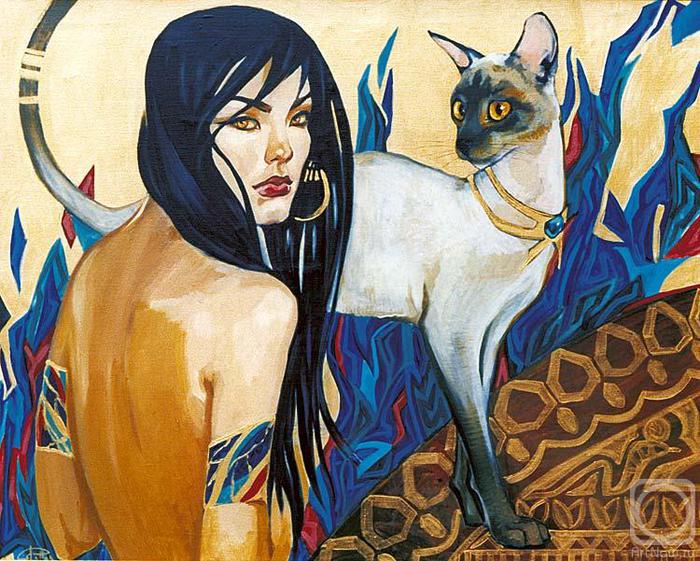

Home cat soon replaced the gods, depicted in the form of lions.
The goddess of cats Baet in the more ancient times was a lioness, but subsequently she was represented as a woman with a cat's head and mummified cats, not lionesses.
From Egypt, cats in later times came to Greece and Rome and were considered as attributes of the goddess Diana.
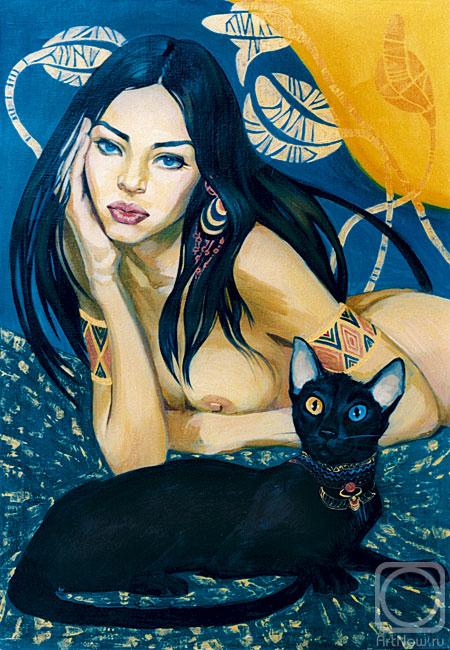

A special magical power was attributed to black cats, and even ash after their burning, sprayed in the fields, supposedly protected from pests.
In the Celts, the cat symbolized evil forces and was often sacrificed, while in the northern Germans the goddess Frey was portrayed in a carriage driven by cats.
Evidence of the deceptiveness of her nature was that, depending on the angle of light falling in the cat, the color of the eyes changed, and her ability to hunt in almost total darkness also created her an evil ally of dark forces.
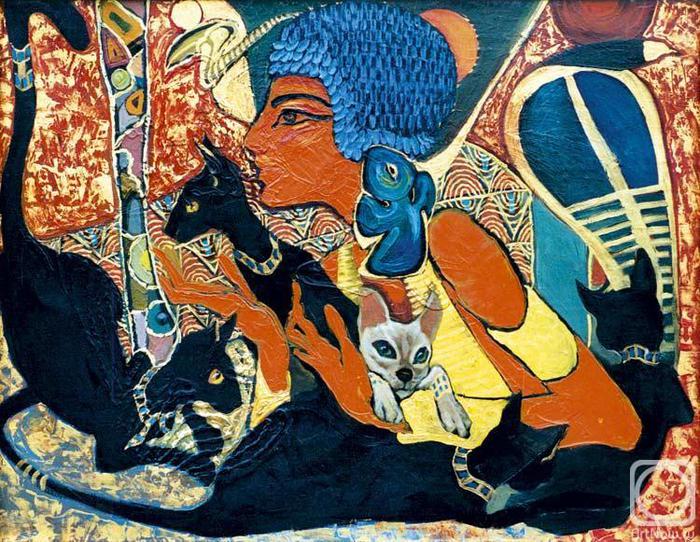

She was credited with cruelty and lasciviousness, and above all she was accused of being an evil spirit, serving witches who allegedly often jump on their cats on black cats.
A black cat still today, according to folk superstitions, is a symbol of misfortune.
It is interesting that ancient Egyptian comic satirical manuscripts often portrayed a "world vice versa", that is, a collar in which the mice on a war chariot fight against cats entrenched in the fortress, which looks like a thousand years ago anticipating modern comic books about Tom and Jerry.
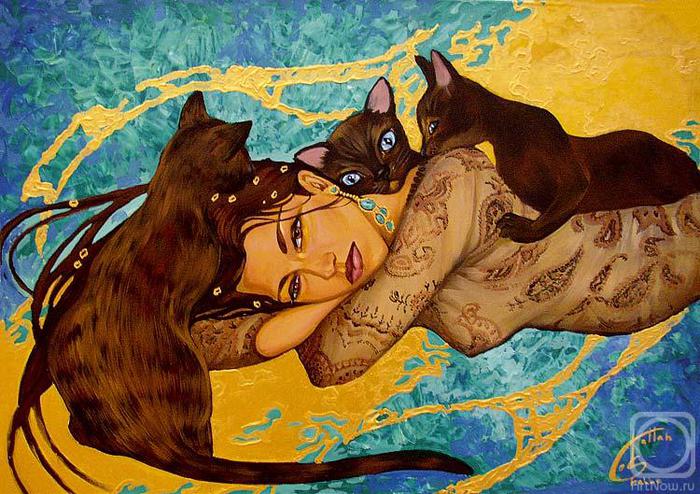

For psychologists, a cat is a "typically female animal" (Aeppli).
It is a night beast, "and a woman, as we know, is much deeper than a man with a simpler soul, is connected with the dark and mysterious side of life"; the conclusion suggests that the negative attitude to the cat mentioned above in many cultures is connected with the aggressive position towards the females.
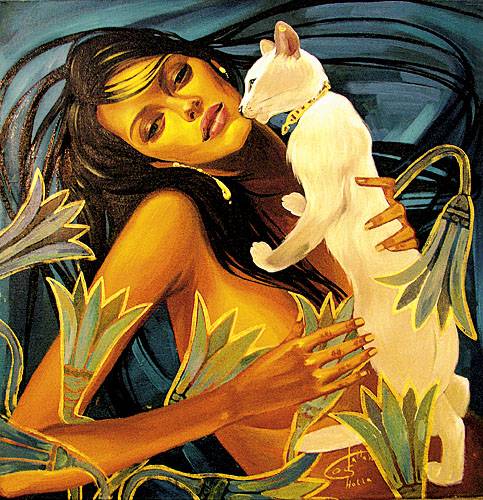

The popular evaluation of a cat as a two-faced, insincere (German falsche Katze, "fake cat", a deceiver) contradicts the point of view on it in ancient heraldry.
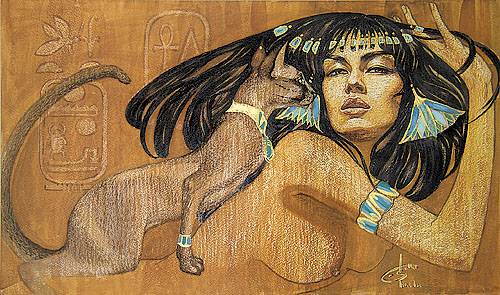

"A cat is interpreted as freedom, because it does not want to be caught or locked anywhere.
She shows a lot of cunning and tireless in her striving to catch up with the enemy, and this is the main virtue of a good soldier.
Therefore, the ancient Swabians, Swiss and Burgundians introduced a cat into their coat of arms, where it denotes freedom "(Böckler, 1688).
"The woman and the cat are so close, the cat is the Egyptian goddess Bast, the master of beauty, dance and joy, this is so closely connected with the woman." This is probably the theme of a woman going through reincarnation through various images of beauty. "- Galla Abdel Fattah
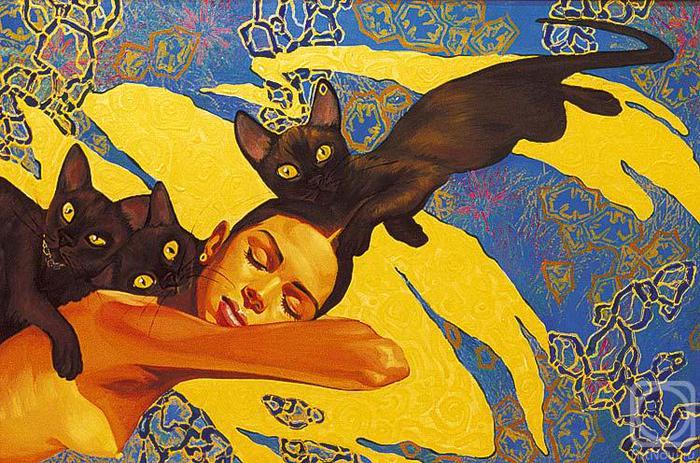
If the girl is not sure whether she should marry, she should take three hairs from the cat's tail, wrap them in a piece of paper and put them at night under the threshold. The next morning you need to unfold the paper and look at the hairs. If they took the form of the letter Y, then we must accept the offer of the hand and heart, if the hairs take the form of the letter N, then the unfortunate groom should be refused.
Belief, prevailing in the mountains of Ozark, USA
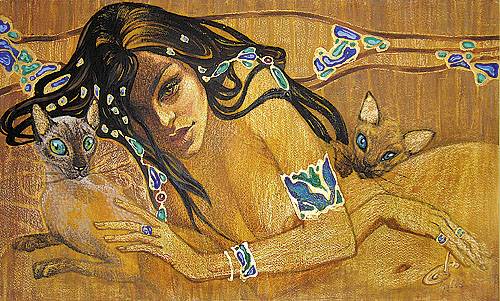
The English King Charles 1 had a black cat, which, he believed, had a beneficial effect on his fate. He was so afraid of losing his beloved animal, which made the guard watch over her. But one day the cat died. "I will no longer have happiness!" cried the king. The next day he was arrested and a few months later his head was cut off.
Historical fact
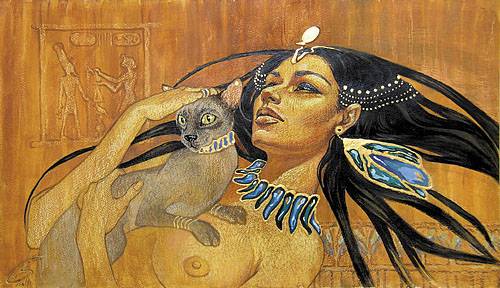
If on the morning of the wedding day the cat appears in the bride's room, then the family life will be rich in quarrels.
American sign
If a cat is sitting at the altar before the wedding, then the marriage will be unhappy.
German Sign
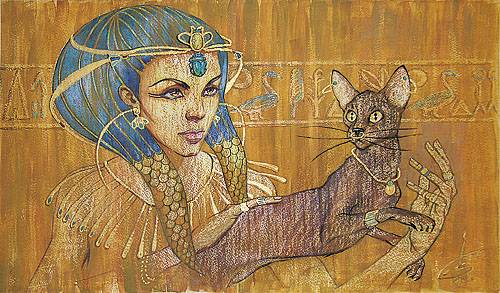
If the house is a black cat (cat), it will not translate lovers.
Old English Sign
If the ship has a black, without a single white hair, a cat, then swimming will be successful.
The confidence of seafarers
People have always intuitively felt that cats have some connection with the other world. That is why it has become a tradition to keep these animals at home as pets, to protect themselves and their families from various mystical events. Those people who do not have the opportunity to get a cat, buy figurines and various souvenirs with the image of these graceful creatures. The meaning of such interior decorations will be described below.
Beliefs related to cats
The history of these small predators originates in Egypt, where cats have long been worshiped. These animals were considered sacred, as according to legend they descended from the goddess Bast. In the Greek tradition, cats were identified with the goddess of hunting Artemis for her quickness and dexterity.
During the Middle Ages, the name of Artemis became synonymous with the words "witch", "sorcerer", and therefore cats became associated with certain dark forces that could adversely affect a person. At the same time, there was a tradition to decorate your house with the figures of these animals. It was believed that the statuette cat protects its owners from adversity and brings joy and prosperity to the house.
Norwegian folklore tells of Freyja, on whose chariot the image of the cat was adorned. That is why in this country the cat statuette is a symbol of the emergence of everything new, especially the new life. It is an amulet for newborns.
Signs related to cats
A special place in Russian folklore is occupied with sayings about as a symbol of misfortunes and troubles. Everyone knows the sign that if such an animal runs across the road, then a series of setbacks awaits you.
However, not all statements about these graceful and mysterious beings are so gloomy. There are many signs about the weather associated with cats. Because these animals have a special sense of change in the environment, people have long been watching them to predict metamorphosis in weather conditions. For example, if a cat is buried in his own hair during sleep, it means that soon a cold snap occurs.
It is also believed that a set of amazing properties has a figurine-cat. A black figure, for example, will help to scare away thieves from the house and bring prosperity to the house.
As already mentioned above, a special relationship in these animals with the other world. A figurine cat, located in the apartment, will not allow the naughty house, as well as various entities to enter the dwelling.
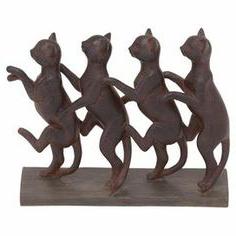
Meaning of figurines
Depending on their appearance, these figures symbolize various phenomena. So, the cat with the tail lifted up personifies optimism and pleasure, the cat with kittens is a symbol of happy and long-awaited motherhood. Composition from several animals personifies friendship, support, mutual aid or love. Of course, there is no clear system of interpretation of what the cat-statuette symbolizes. The meaning of each figure can be explained only approximately.
A special role is played by such figurines in the attraction of luck. Their owners are often lucky, thanks to which the most cherished dreams come true. Another value of such figures in the house - they help the development of intuition and supernatural abilities of their owners.
Special aesthetics of black cats
A large number of signs are associated with these creatures. It is believed that a black cat is an indispensable attribute of a witch, present as a conductor in all mystical and magical rituals.
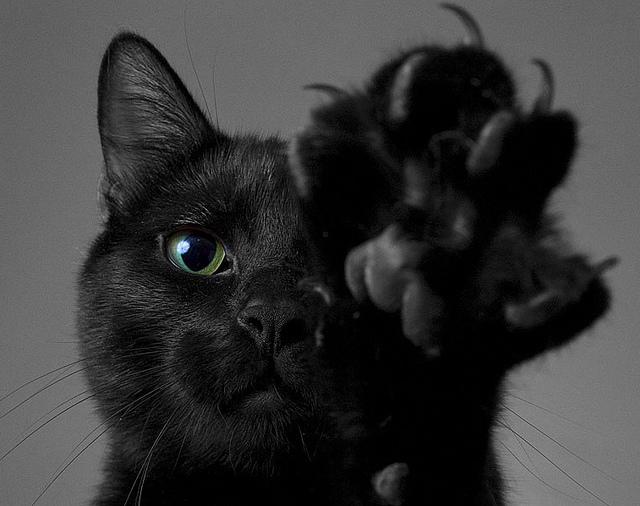
In the English tradition, by the way, they treat these animals without any fear, and if a black cat crosses the road, it will make a person even more fortunate and happy. In Japan, they hold the same opinion. In China, these creatures are treated with special caution and consider them to be harbingers of poverty and hunger. In most European countries, as in Russia, black cats are treated with fear and trembling.
Surprisingly, all nations unanimously agree that a black cat statuette brings good luck to the house and protects its owners from adversity.
Cat figurine as an interior decoration
Many people who do not believe in any otherworldly forces and mysticism, perceive the figures of cats as a stylish and actual decoration of the interior. A statuette of an Egyptian cat is a special souvenir that not only reminds of a trip to this amazing country, but also gives special attention to the surrounding environment.

There are cases when people were engaged in collecting such figures throughout their lives. So, the Frenchwoman F.Groff keeps at home more than 2 thousand 100 copies of figurines from different countries of the world, as well as more than 9 thousand other things that bear the image of a cat. At the same time she keeps the houses of four living cats. A woman is rightly considered the possessor of one of the greatest collections in the world associated with these amazing graceful and mysterious creatures.
Symbols and myths about cats and cats.
The cat symbolizes royalty. This is a solar symbol. "The sun, looking down into the underworld during the night, could be called a cat, as it was, for it also saw in the dark," - says Elena Blavatsky, telling about the mythological culture of the ancient Egyptians. The Egyptians called the cat "May", which in translation means "seeing."
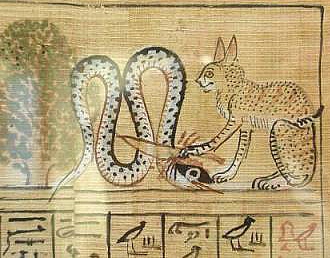
The cat in Ancient Egypt was considered a sacred animal of the Sun God - Ra
. According to legend, the sun god Ra, turning into a red cat, swims across the underground river Nile every night to rise again in the sky and illuminate the Earth. The greedy and treacherous serpent Apop, wishing to swallow the luminary, drinks water from the underground river, and seeks to destroy the sacred animal.
This is reflected in legends of Ancient Egyptthe struggle of two forces: darkness and light. It is presented as a cruel battle of the snake Apopa and the sun god in the form of a cat. The battle took place near the city ![]() Heliopolis under the sacred tree of life - sikimore. A red cat, symbolizing the sun god Ra, cut off the head of the terrible serpent and the power of light was won in a fierce battle with the forces of darkness! As a token of gratitude for saving the Earth from the forces of darkness, people built sacred temples in honor of the cat personifying the Sun, and performed worship ceremonies before the sacred animal,
Heliopolis under the sacred tree of life - sikimore. A red cat, symbolizing the sun god Ra, cut off the head of the terrible serpent and the power of light was won in a fierce battle with the forces of darkness! As a token of gratitude for saving the Earth from the forces of darkness, people built sacred temples in honor of the cat personifying the Sun, and performed worship ceremonies before the sacred animal, 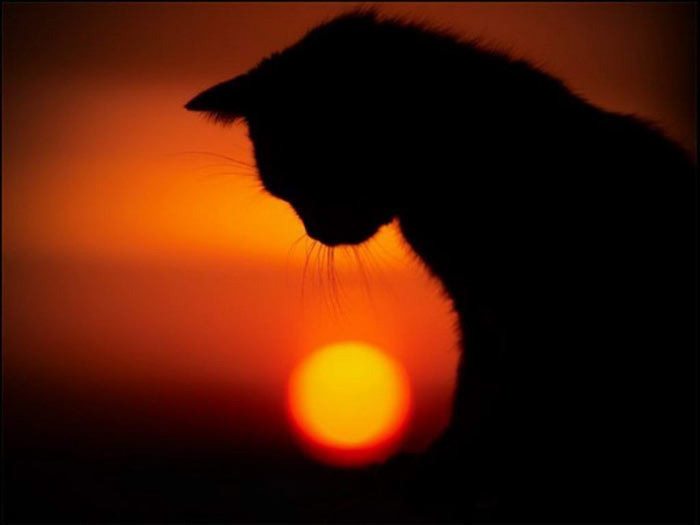 who saved people from a terrible serpent, the embodiment of evil. These temples are still in effect, and people, remembering this accomplishment, are grateful to the cats, these sacred animals, who every night in the guise of a red cat win the evil dragon.
who saved people from a terrible serpent, the embodiment of evil. These temples are still in effect, and people, remembering this accomplishment, are grateful to the cats, these sacred animals, who every night in the guise of a red cat win the evil dragon.
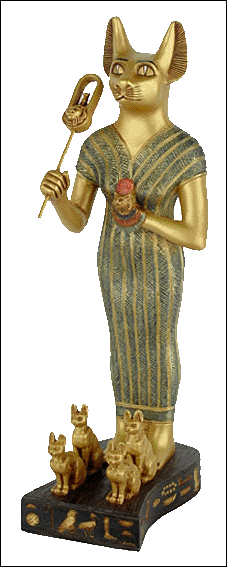 The cat, according to Elena Blavatsky, Egyptians identified with the moon: "The moon was a contemplative in the night skies, and the cat was its equivalent on the ground." Thus, the cat was perceived by the Egyptians as the Moon - the goddess of joy and fun, which they called Bast. In this mythological image the most beautiful qualities of a woman are laid.
The cat, according to Elena Blavatsky, Egyptians identified with the moon: "The moon was a contemplative in the night skies, and the cat was its equivalent on the ground." Thus, the cat was perceived by the Egyptians as the Moon - the goddess of joy and fun, which they called Bast. In this mythological image the most beautiful qualities of a woman are laid.
According to myths of Ancient EgyptBast was portrayed as a woman who had a cat's head instead of a human head, and a sistra in her hand. Sometimes on the images she was with the head of a lioness, which corresponded to the godlike Sekhmet and Tefnut. In later times, the cat was given royal power and identified with the goddess Isis.
From Egypt, the domestic cat infiltrated other countries, but it took many years. In Europe, it became known about 2 thousand years ago. The first report on the appearance of cats in Europe can be found in Plutarch in the 1st century AD. e.
Ancient Greeks, according to mythology, associated the symbol of the cat, with the goddess of hunting - Artemis. She was credited with an evil and unbridled character. Her ability to see in the dark, changing the shape of the pupil, brought the image of the Cat closer to the symbol of the Moon. Since the change in the pupil of the cat occurs in accordance with changes in the lunar phases.
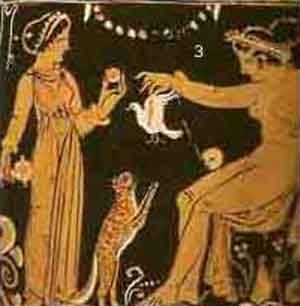 According to mythology of Ancient Rome, the symbol of the cat was identified with the image of the beautiful Diana - the goddess of fertility, which blesses the birth of all life on Earth. Her femininity and fertility were placed next to Diana's image of the image of Typhon, whom the independent Diana left, turned into a cat. In Ancient Rome, a cat - this proud and freedom-loving animal - served as a symbol of freedom and independence, was an indispensable attribute of the goddess Libertas and was portrayed next to her.
According to mythology of Ancient Rome, the symbol of the cat was identified with the image of the beautiful Diana - the goddess of fertility, which blesses the birth of all life on Earth. Her femininity and fertility were placed next to Diana's image of the image of Typhon, whom the independent Diana left, turned into a cat. In Ancient Rome, a cat - this proud and freedom-loving animal - served as a symbol of freedom and independence, was an indispensable attribute of the goddess Libertas and was portrayed next to her.
Myths of the Ancient East attribute strength and intelligence to cats, in Tibet they are called the "heavenly eye". The cat symbolizes female energy - Yin and is endowed with secret power, notes Cat-and-cat.com. Glowing in the dark big round eyes of a cat, turned it into a mysterious nocturnal beast. It is believed that she is able to communicate with otherworldly forces and, through this, can transform and dissipate negative energy.
Slavic peoplesconnect the image of the Cat with the dark forces, attributing to him lust and laziness. According to Slavic mythology, the Cat is the embodiment of evil spirits.
The image of the cat has its female incarnation and is always connected with witches, that's why everyone is so afraid and do not like black cats.
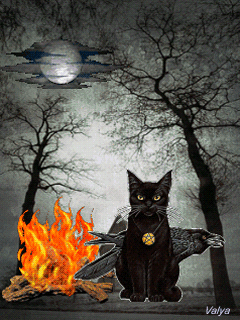
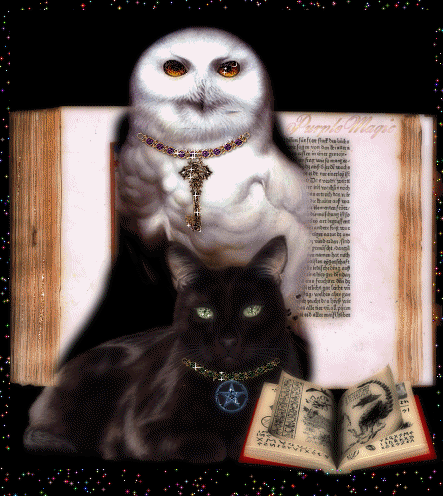
Yet a cat according to ancient belief is associated with the other world, with a world of dreams and visions. According to Slavic mythology, the cat is made of the mitten of the Virgin Mary, it is considered to be "sleeping in the sleeves", protects small children and drives away all evil spirits. That's why there are so many lullabies about cats.
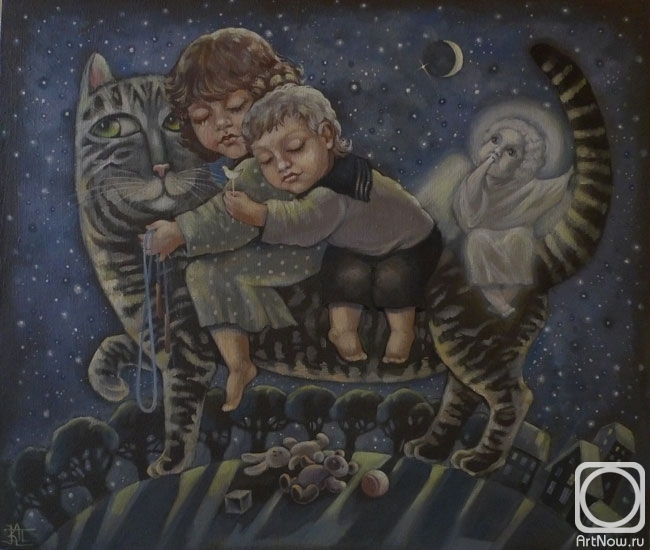
In Russia, domestic cats appeared only at the beginning of the eleventh century, thanks to travelers and seafarers. 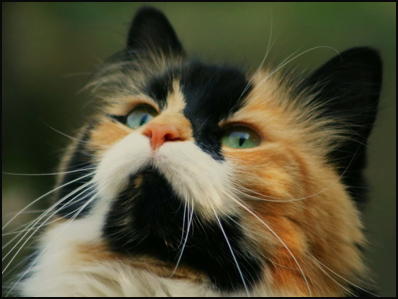 They quickly won universal love and popularity: the saying "Without a cat is not a hut" has long appeared. According to the laws in force, the theft of a cat was punished with a significant fine, several times higher than the fine for stealing a cow. Three-color cat, according to legends, brought happiness to their masters, also believed that a black cat in the house saves from a thunderstorm and from thieves. Looking through the old kind fairy tales, we see the majestic figure of Kot Bajun sitting on a pole, beating all the people, inviting an irresistible dream and telling tales, and Kota-Kotofeyich, who also defeated the Serpent and taught people to fire.
They quickly won universal love and popularity: the saying "Without a cat is not a hut" has long appeared. According to the laws in force, the theft of a cat was punished with a significant fine, several times higher than the fine for stealing a cow. Three-color cat, according to legends, brought happiness to their masters, also believed that a black cat in the house saves from a thunderstorm and from thieves. Looking through the old kind fairy tales, we see the majestic figure of Kot Bajun sitting on a pole, beating all the people, inviting an irresistible dream and telling tales, and Kota-Kotofeyich, who also defeated the Serpent and taught people to fire.
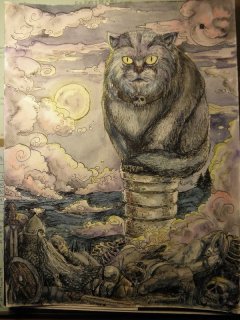
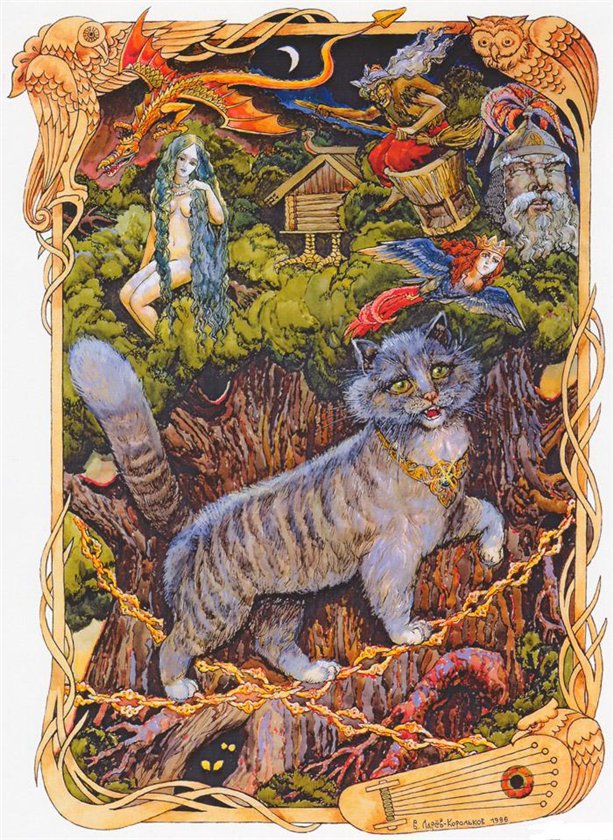
In Pushkin, the cat scientist is not at all so simple: the image of Oak is the symbol of the World Tree or the Tree of Life, the golden chain is the symbol of the Ways that this learned man walks day and night. This is a kind of subdued and ennobled version of the cat Banyun.
In the cat can turn and a fairy-tale hero, the winner of the monster Ivan Popyalov, the hero of the same name of the Belarusian fairy tale.
The motif for the transformation of the hero into the Cat is also known in the East Slavonic cycle of tales about Ivan the Cat's son (more often Ivan Suic or Ivan the peasant son). In some of these fairy tales, the Cat (along with him sometimes acts as Kot Kotovich, brother of Ivan Tsarevich) may be the incarnation or assistant of a serpent and a serpent. Both these functions are combined in a fairy tale about Volya Volovich, who after each battle with the snake meets "Kotishche, wipe out the eyes", threatening to eat it. The hero kills the Cat, puts on his skin, and under the guise of the Cat enters the Baba Yaga.
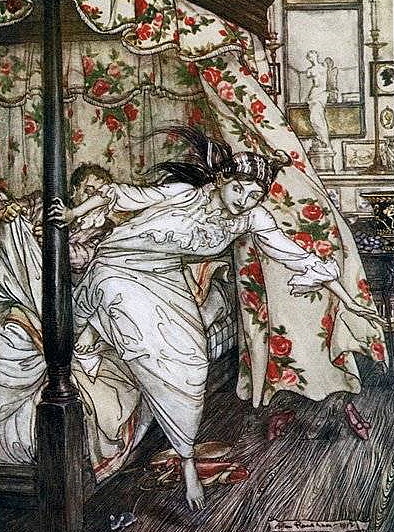 There have long been stories about cats that could turn into people and take on the appearance of beautiful maidens. Aesop's fable "Venus and the Cat" tells of a cat who fell in love with a beautiful young prince. Venus, the goddess of love, agreed to turn the animal into a charming girl; the young people met and eventually got married.
There have long been stories about cats that could turn into people and take on the appearance of beautiful maidens. Aesop's fable "Venus and the Cat" tells of a cat who fell in love with a beautiful young prince. Venus, the goddess of love, agreed to turn the animal into a charming girl; the young people met and eventually got married.
However, the goddess was not sure that the transformation of the cat was complete: on the wedding night she let the mouse into the bedroom of the young. Forgetting everything, the girl rushed at the mouse and devoured it. The goddess, whose suspicions were confirmed, decided that the girl should be turned back into a cat.
All superstitions come from myths. There are these kinds of mythical cats: "cat-demon"; "cat-house"; "cat-destroyer"; "cat-guide".
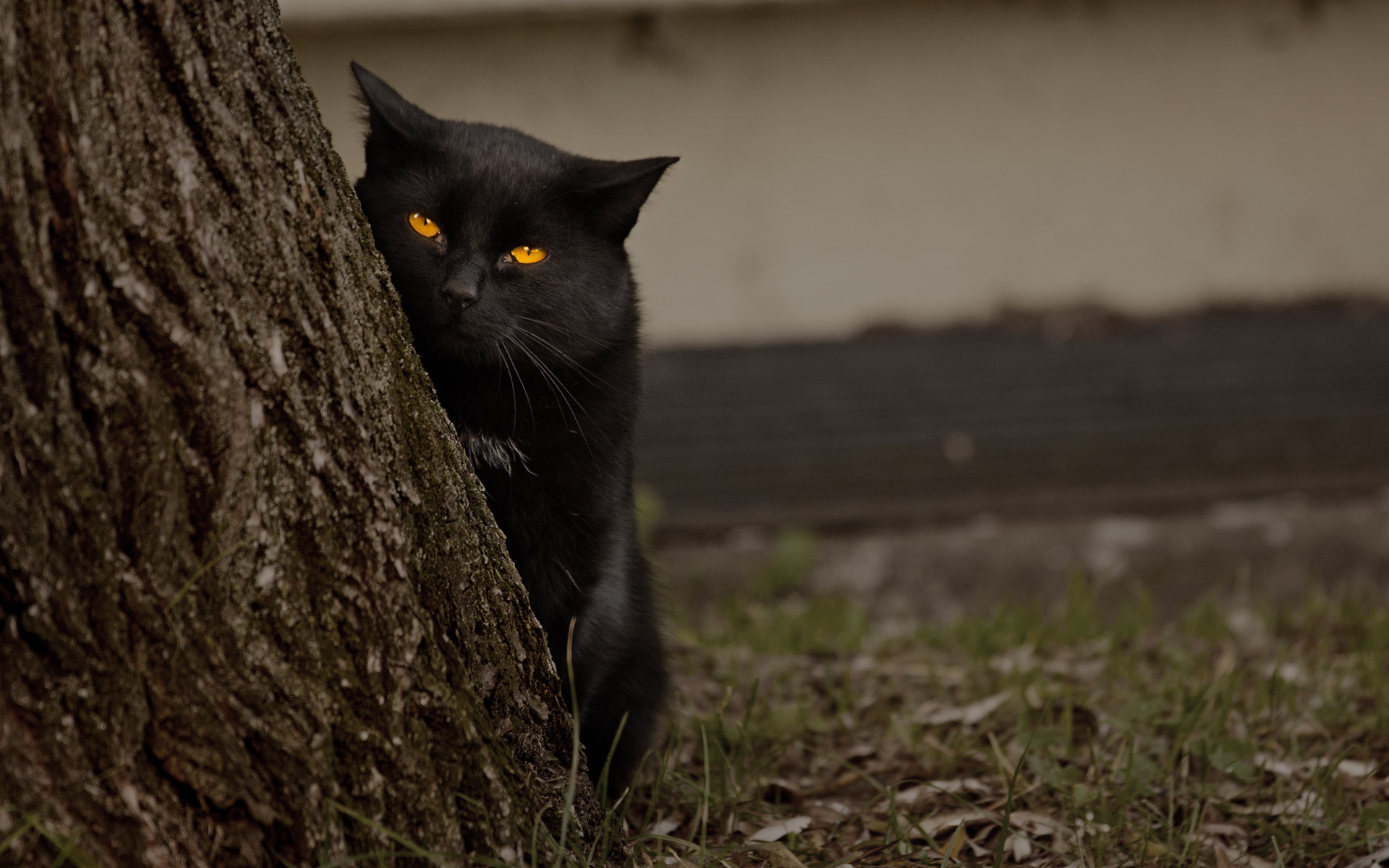
Cat Demon
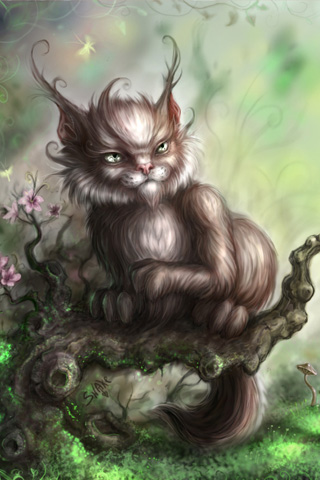 In mythology, a cat acts as an incarnation or helper of the devil and evil spirit. There is a belief about a special feline devil, an evil spirit, in which sorcerers borrow their strength. In some cases, the cat acts as a witch. In the Slavic folk culture, the result of the action of a black cat is most often illness, corruption, evil eye, death.
In mythology, a cat acts as an incarnation or helper of the devil and evil spirit. There is a belief about a special feline devil, an evil spirit, in which sorcerers borrow their strength. In some cases, the cat acts as a witch. In the Slavic folk culture, the result of the action of a black cat is most often illness, corruption, evil eye, death.
Often in folklore you can find the motive of turning a cat into a man and the reverse transformation of a person into a cat, as well as its consequence - the presence of forms that combine the elements of the cat and man. The elusiveness of the boundaries between the feline and the human partly allows us to explain the origin of folklore names such as Kot Kotofeich, Kotofey Ivanovich, and others.
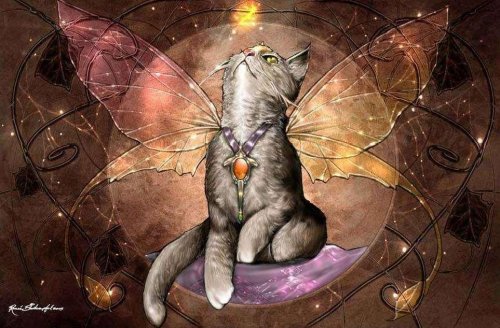
Cat guide
Often a cat plays the role of a conductor between the world of people and the other world. A cat is also a link between the worlds, and at the same time a victim. It is believed that the evil spirit is seen by all the blind animals. To this category, of course, is the cat .
Cat - brownie
In Russia, the cat has long been revered as ![]() keeper of the home, a symbol of comfort. It is no coincidence that in many countries there was a sign: before entering a new dwelling, we must put ahead of ourselves the "mistress" - a cat. It will ensure well-being. Where she went to bed, put a bed.
keeper of the home, a symbol of comfort. It is no coincidence that in many countries there was a sign: before entering a new dwelling, we must put ahead of ourselves the "mistress" - a cat. It will ensure well-being. Where she went to bed, put a bed.
In the Vladimir region, long ago this ritual was invested with one more meaning: the one who crosses the threshold of the new house first, that first dies. And since a cat has nine lives, and not one, as a human being, it was allowed in the first place - it will revive again. The cat is so connected with its owner that she can fulfill some of his duties, namely: to play the role of patron of the house and livestock. It is cats who are the main keepers of houses. They protect our houses from the invasion of evil, from "uninvited guests" it is very difficult to see a person.
All cats, regardless of breed - have an amazing ability. They can redistribute and generate negative energy by recycling into a lighter one. Probably, if you have a pet at home, then you noticed that if you get something sick, then a friend on four paws already here as here. Cats always feel where their care is needed.
Cat Destroyer
A special function have cats, which are told in the legends. The image of a cat in Slavic legends is quite specific - it is a cat-creator and cat-destroyer. In various tales, the motives of the learned cat are common. Pushkin's scientific cat walking "along the chain" is a sweet and harmless creature in comparison with its folklore prototype - the monstrous Cat Banyun,
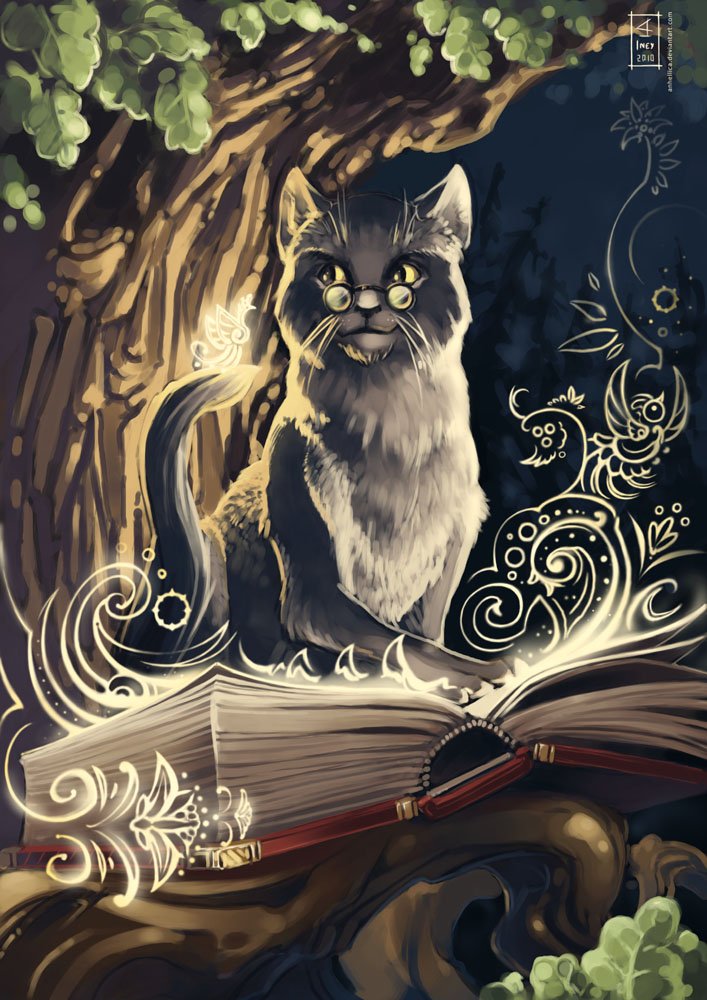
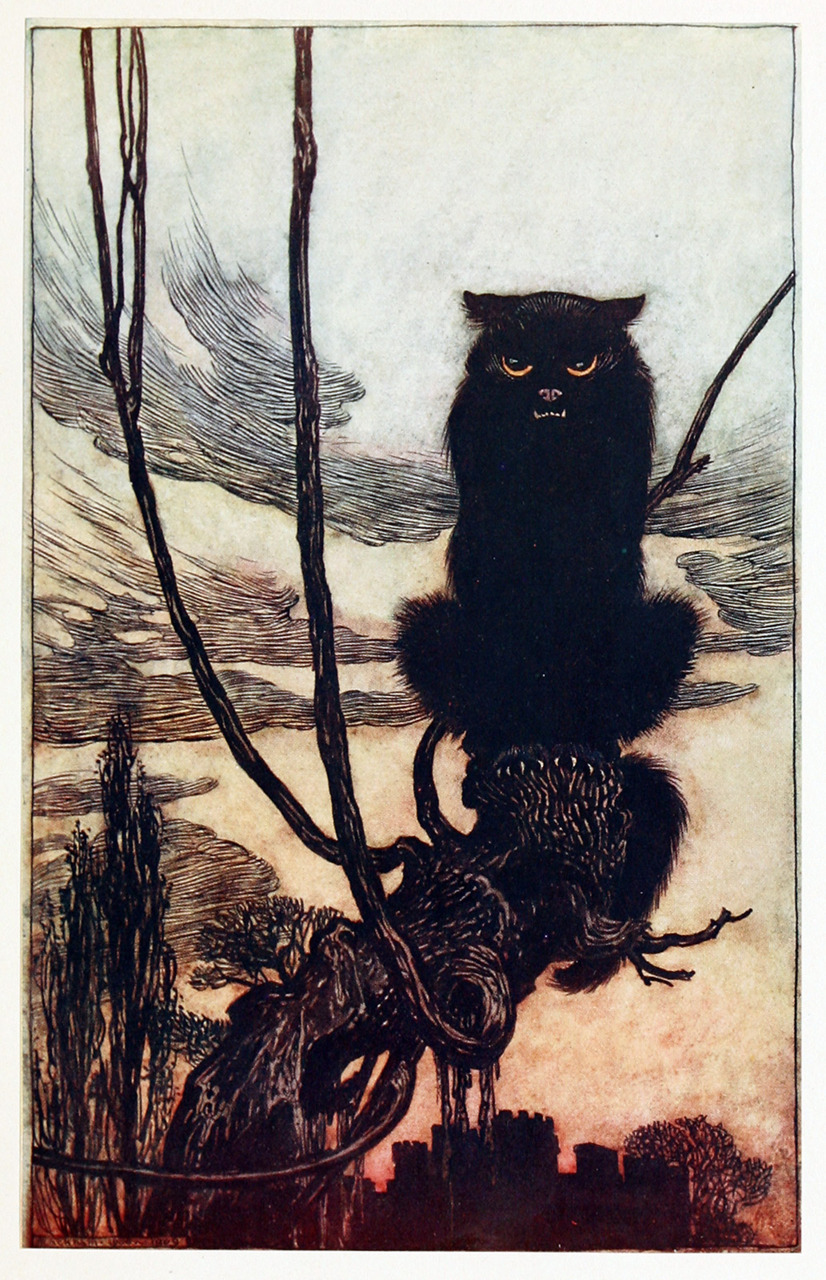
Cat Baiyun
Cat Bajun is a character of Russian fairy tales. This cat, tells tales, sitting on a pole, but at the same time lets a dream and "beat all the people." The word "bajun", according to the explanatory dictionary of Dahl, comes from "bayat" or "bait." This means "talking, telling", but Bajun himself is a "talker and narrator", respectively. In the image of the cat of Bajun, the features of a fairy-tale monster and a bird with a magical voice joined together. In fairy tales it is said that Bajun sits on a high iron pole. He weakens everyone who tries to approach him, with the help of songs and spells. The most striking example of the dual nature of a fairy-tale cat is the image of a female Baba Yaga from the fairy tale Baba Yaga.
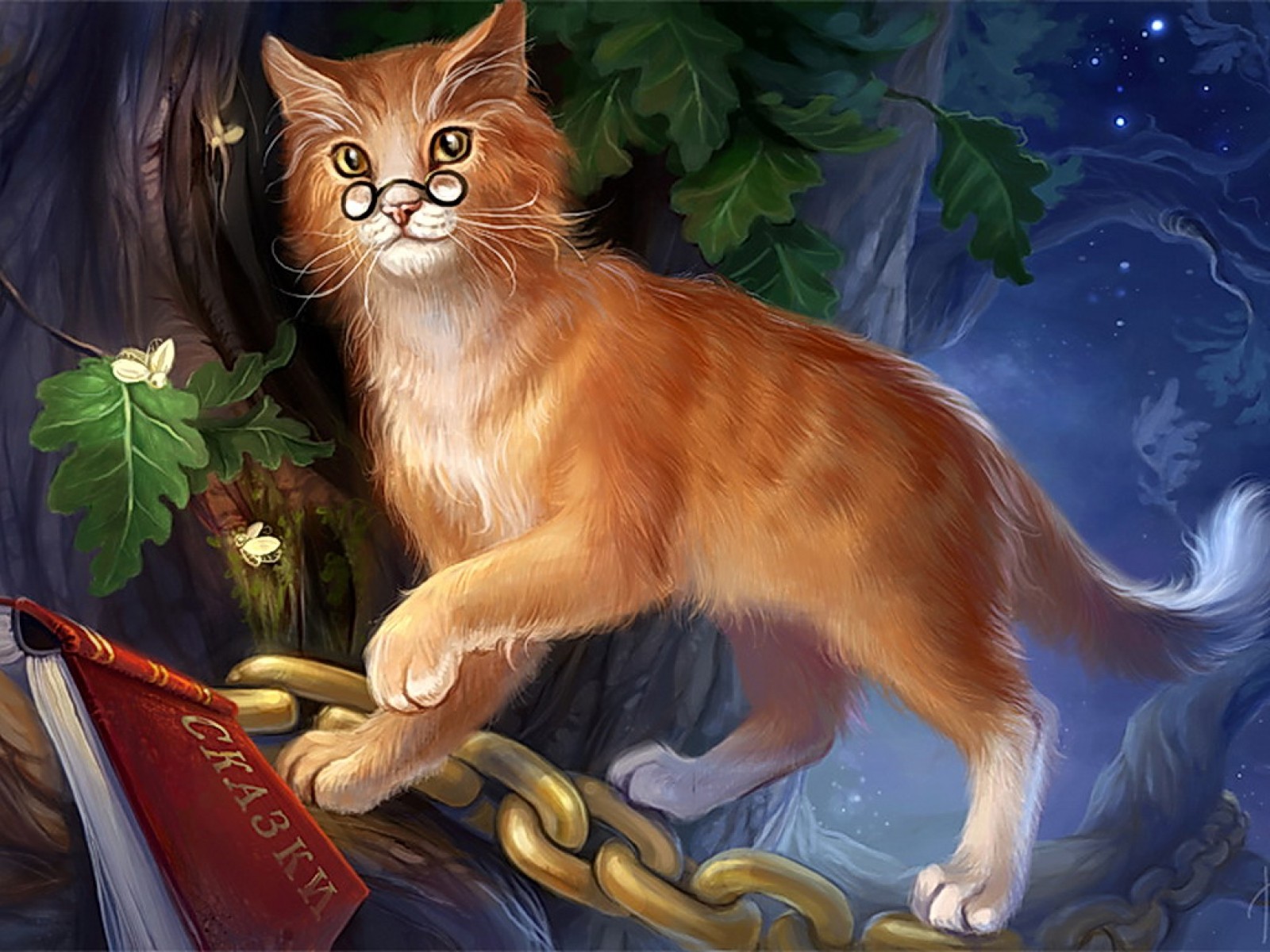
Cat - game
Another unusual character of fairy tales - cat-toy from the fairy tale "Ivan the Little - Great Mind". This cat plays on the magical harp, and his game makes everyone who hears it, dance in addition to their own will.
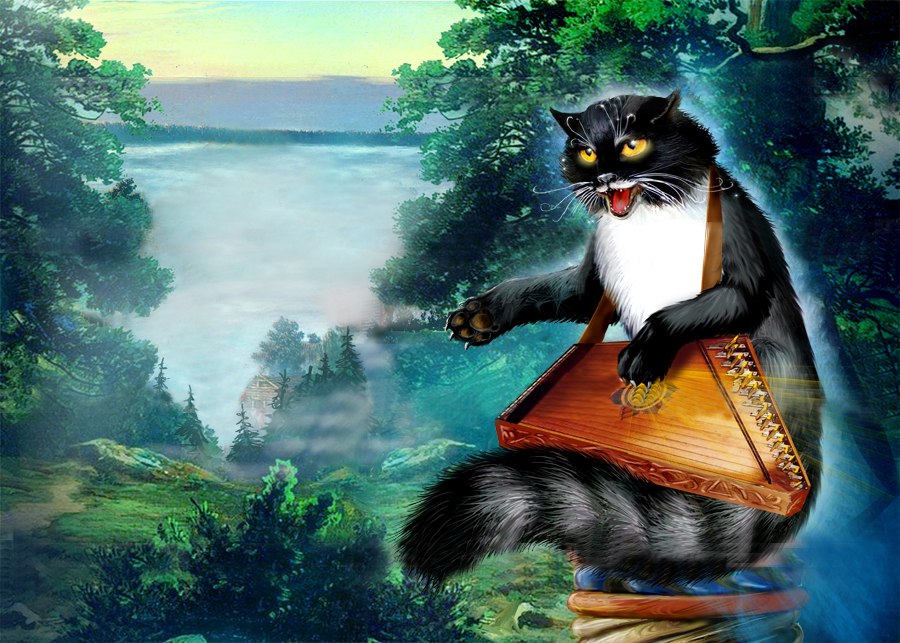
Fiery Earth Cat
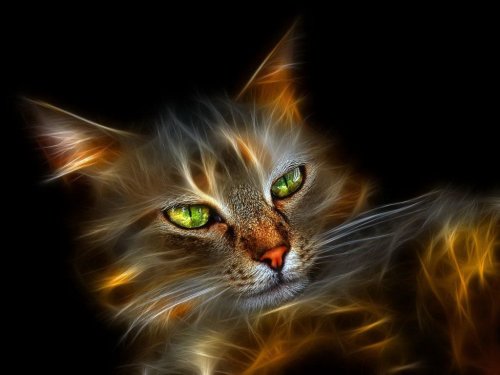
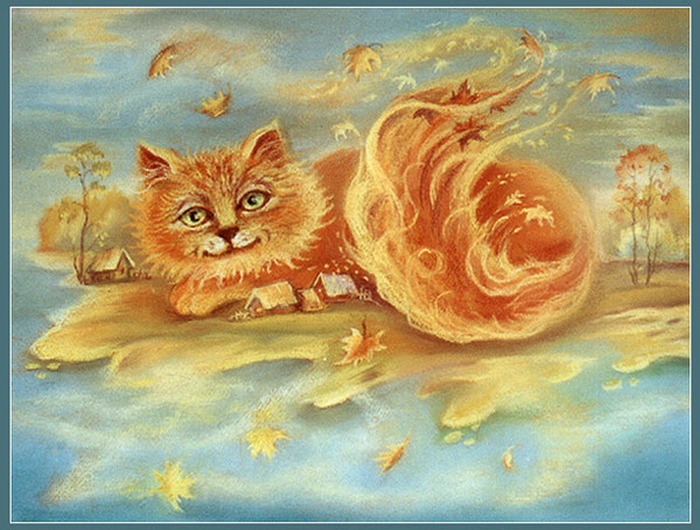
A cat is an amazing animal that lives next to a person for more than five thousand years.This is a proud and independent, but sensitive and responsive to kindness creature. Of course, there are other pets in people, such as dogs, hamsters or fish, but it's cats and cats that are the most favorite of all pets. These pets live in all corners of our earthly planet, and this can not but rejoice. They are very soft, gentle, little fluffy lumps that give a person warmth and affection. They awaken the best feelings in us. People have always believed that they are the ones who give birth to cats, but in fact everything is quite the opposite. Since ancient times, cats have always accompanied a man. But they never served him like the rest of the animals. While living nearby, they remain fully independent and friendly neutrality. Once, scientists decided to calculate how many pets live on our planet, and it turned out that there are only 400 million of them, and the largest number of cats and cats live in the US. And in Indonesia there are 30 million of these nice and wonderful animals, in France there are more than 8 million.
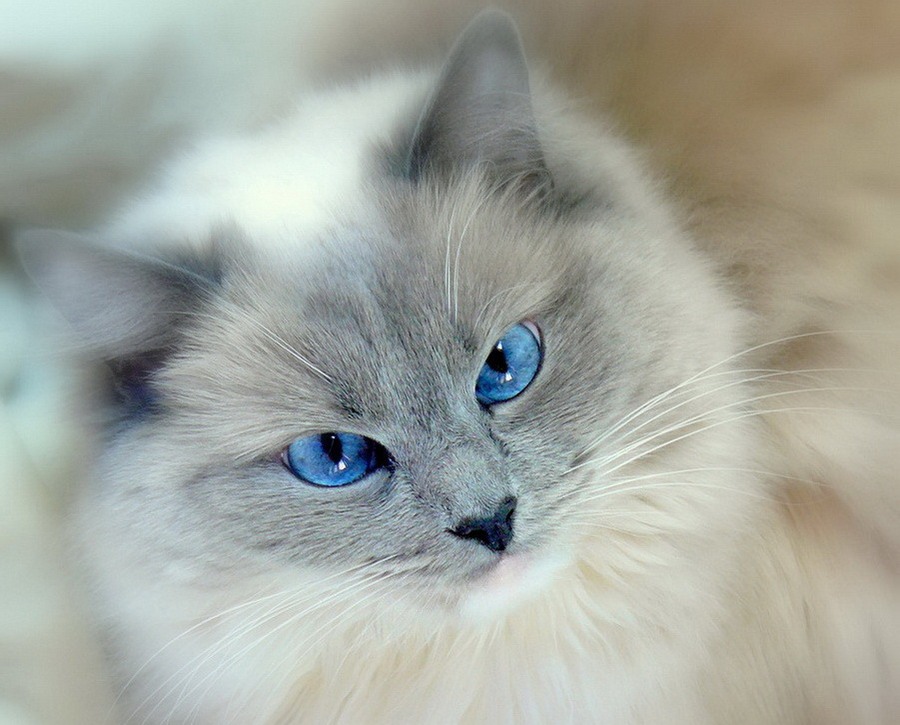
Precisely because there are always so many cats and cats living around and living with people, people invent various legends, tales, legends. Each people they are different, each people sees these nice little creatures in their own way.
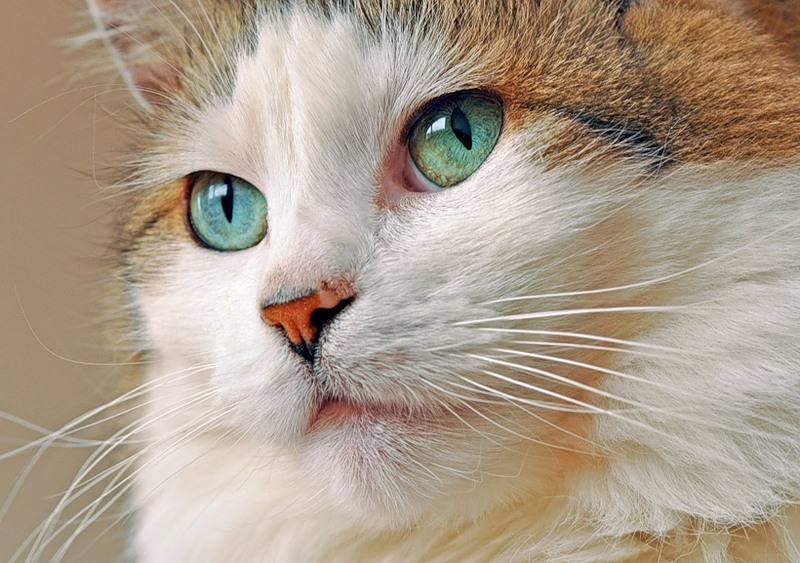
Therefore, the cat not only entered the mythology of different peoples, but also became the hero of many folklore and literary works.
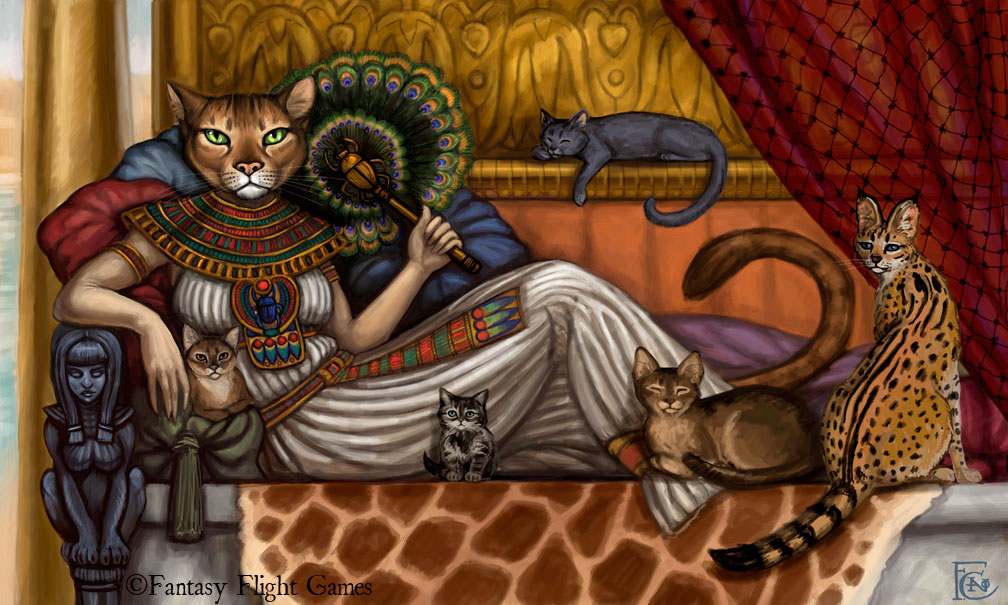
Today the cat is one of the most beloved pets in many countries. In addition, in some cultures the cat acts as a symbol of royalty. A cat in Feng Shui symbolizes a home and a cosiness. She vigilantly stands guard over family happiness. The symbol of the cat always helps to get out of difficult situations and helps in the fight against evil. These cute creations are a traditional amulet for attracting money, luck and protection to your home or business.
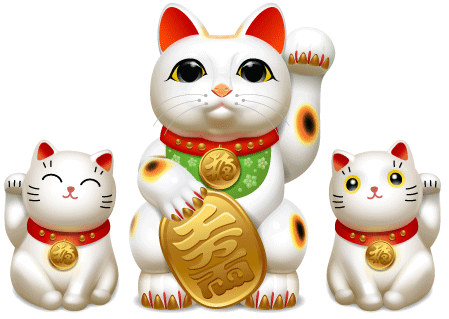
![]()
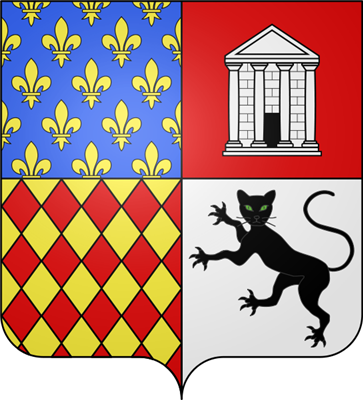 A cat is often found in medieval heraldry. These animals have an understanding of freedom, since the cat does not want to be caught or imprisoned. The cat is not discouraged and cunning ... Therefore, giving cats the symbol of freedom, the ancient clans of Swabians, Swiss and Burgundians introduced them into their arms
A cat is often found in medieval heraldry. These animals have an understanding of freedom, since the cat does not want to be caught or imprisoned. The cat is not discouraged and cunning ... Therefore, giving cats the symbol of freedom, the ancient clans of Swabians, Swiss and Burgundians introduced them into their arms
In the Middle Ages in France and Switzerland the cat was depicted on the arms of the most famous and ancient clans. Independence and love of this animal in all ages were worthy of respect. The cat is an ardent defender of his territory, he is cheerful and cunning. This is how we see it on the ancient arms of the Swabians.
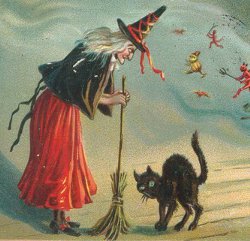 In Of Francecats were considered witch animals. The special miraculous properties were given to white and black cats. In the Middle Ages, the Inquisition declared cats a tool of the devil. They were burnt and drowned along with the "sorcerers". In general, many superstitions are connected with cats, and in the majority they are rather naive than absurd.
In Of Francecats were considered witch animals. The special miraculous properties were given to white and black cats. In the Middle Ages, the Inquisition declared cats a tool of the devil. They were burnt and drowned along with the "sorcerers". In general, many superstitions are connected with cats, and in the majority they are rather naive than absurd.
The goddess of fertility, love and beauty Freyja in Scandinavian mythology went in a cart driven by cats. In China, the cat also symbolized motherhood and the keeper of the harvest. 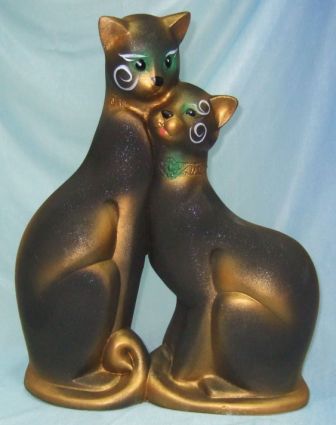 They believed that if you hang a bundle of cat hair on the door of the young mother's room, the baby will be happy.
They believed that if you hang a bundle of cat hair on the door of the young mother's room, the baby will be happy.
In Japan, only a very well-to-do, famous person could become the owner of the cat. The maintenance of the animal required huge expenses: the pet was accepted to dress up in every possible way, to feed only from gold and silver dishes with specially prepared food and even to attach to it a personal servant. Rich Japanese took in their house very small kittens who had not yet learned how to hunt, so they did not even know how to catch mice. Well, ordinary citizens of the Land of the Rising Sun believed that the usual image or a figurine of a small animal would help frighten off rodents.
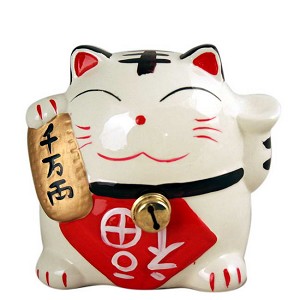
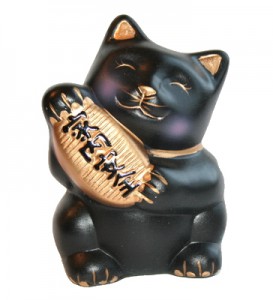
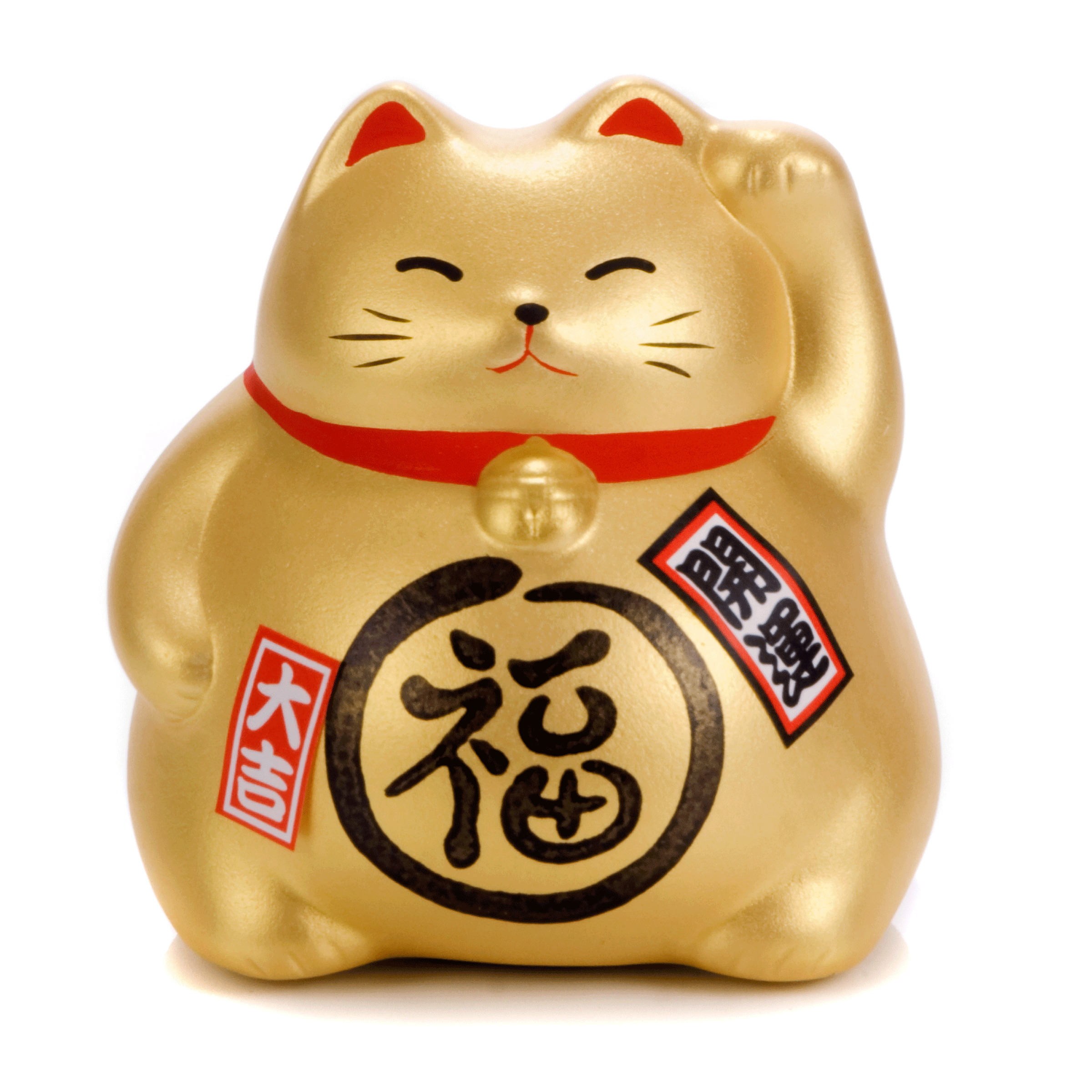
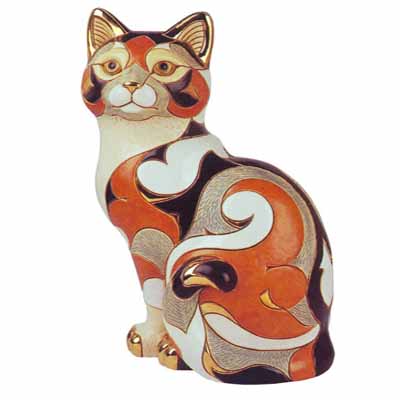
In Islam, the cat also has a special place. She, the only one of the animals, is allowed to enter the mosque and complete freedom of action there.
Muslims believe that the cat was born in the Noah's Ark from the sneezing of a lion.
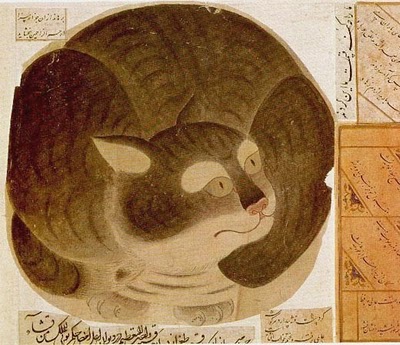 According to one of the myths, it all started with the beloved cat of the Prophet Muhammad. Her name was Muezza. The prophet loved her so much that she never disturbed her sleep, and the water she drank used to wash herself before prayer. She also liked to sleep on his knees during sermons. In general, behaved like any favorite domestic cat. Once the pussy fell asleep on the sleeve of the master's dressing gown, prepared for the morning prayer. Without thinking for a long time, Muhammad cut off the sleeve on which the animal was dozing, and dressed. When Muhammad returned after the prayer, Muetsts woke up and bowed to the Prophet, and he rubbed the cat three times on the back. Because the hand of the Messenger of Allah touched the back of the animal, cats almost never fall on their backs, but land on their feet.
According to one of the myths, it all started with the beloved cat of the Prophet Muhammad. Her name was Muezza. The prophet loved her so much that she never disturbed her sleep, and the water she drank used to wash herself before prayer. She also liked to sleep on his knees during sermons. In general, behaved like any favorite domestic cat. Once the pussy fell asleep on the sleeve of the master's dressing gown, prepared for the morning prayer. Without thinking for a long time, Muhammad cut off the sleeve on which the animal was dozing, and dressed. When Muhammad returned after the prayer, Muetsts woke up and bowed to the Prophet, and he rubbed the cat three times on the back. Because the hand of the Messenger of Allah touched the back of the animal, cats almost never fall on their backs, but land on their feet.
Another myth says that the dark stripes on the animal's skin are a trace from the prophet's fingers. One day a cat killed a snake, which climbed into a sleeve and was about to sting Muhammad. Ahead of the Prophet, who was about to put on clothes with the death in her, the cat courageously jumped on the sleeve, bitten the snake and proudly showed the prey to Muhammad. Was it Muezza? For his salvation, the Prophet touched the cat's forehead and forever left four distinct lines on it, marking the blessed animal.
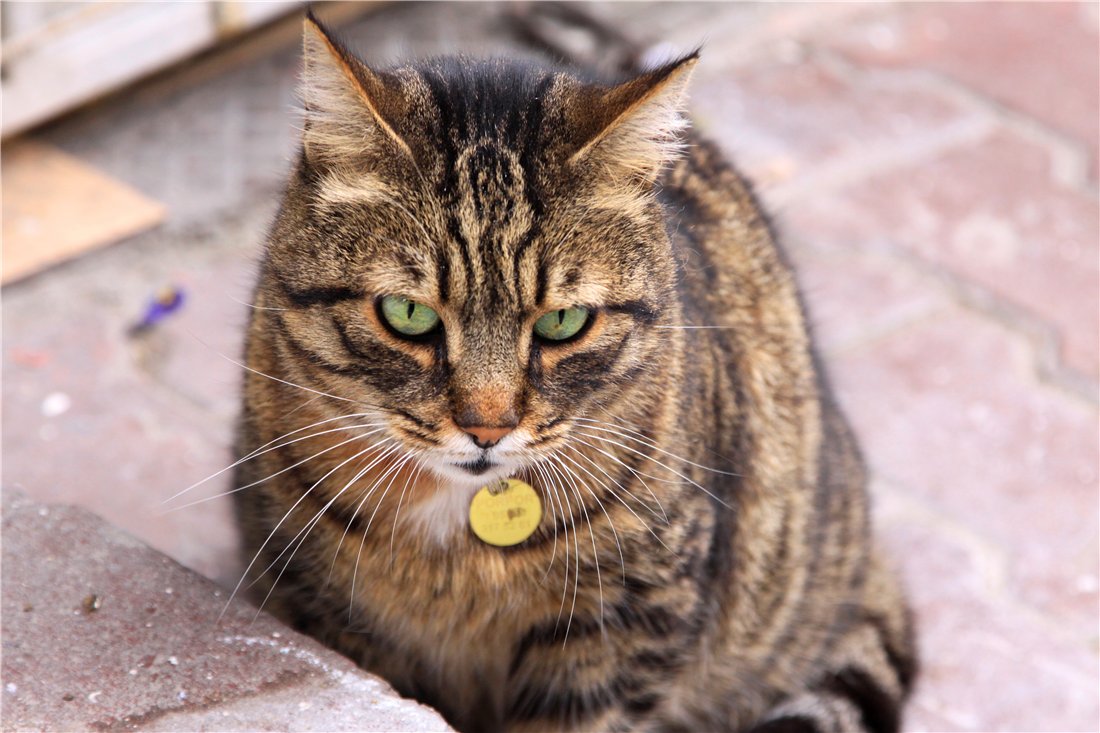
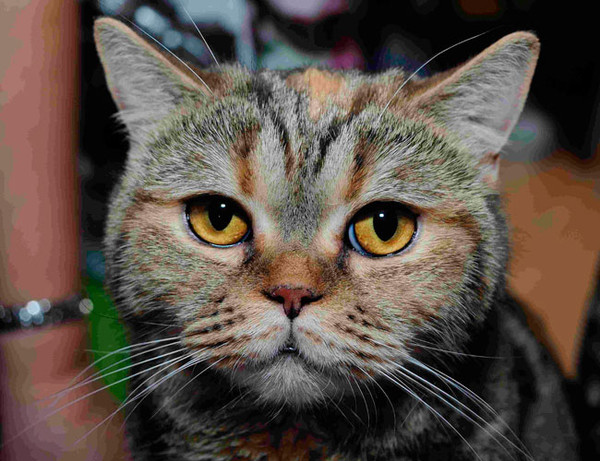
In addition, Muhammad also forbade selling cats for money, or exchanging for goods. This is a free being, not property, the Prophet considered with respect.
The love of Muhammad was shared by his relatives. So, the friend of the Prophet Abd al-Rahman even deserved the nickname Abu Huraira, the father of cats, since everywhere, wherever he went, he had a kitten with him. In addition, being a caretaker of the mosque, he took care that the neighboring cats were always full. Because of this, the cat's tribe in the mosque itself has increased significantly. Cotopapa justified his nickname.
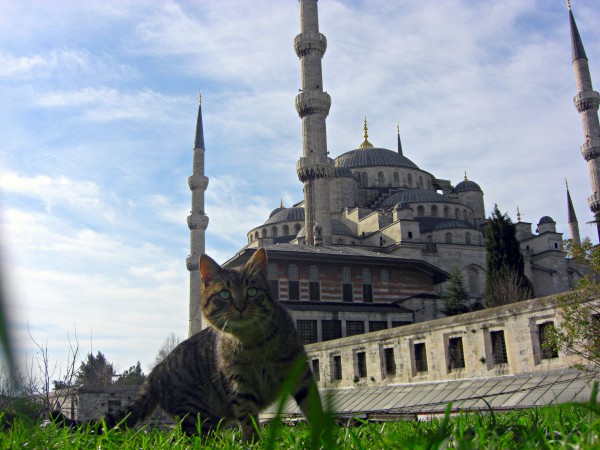
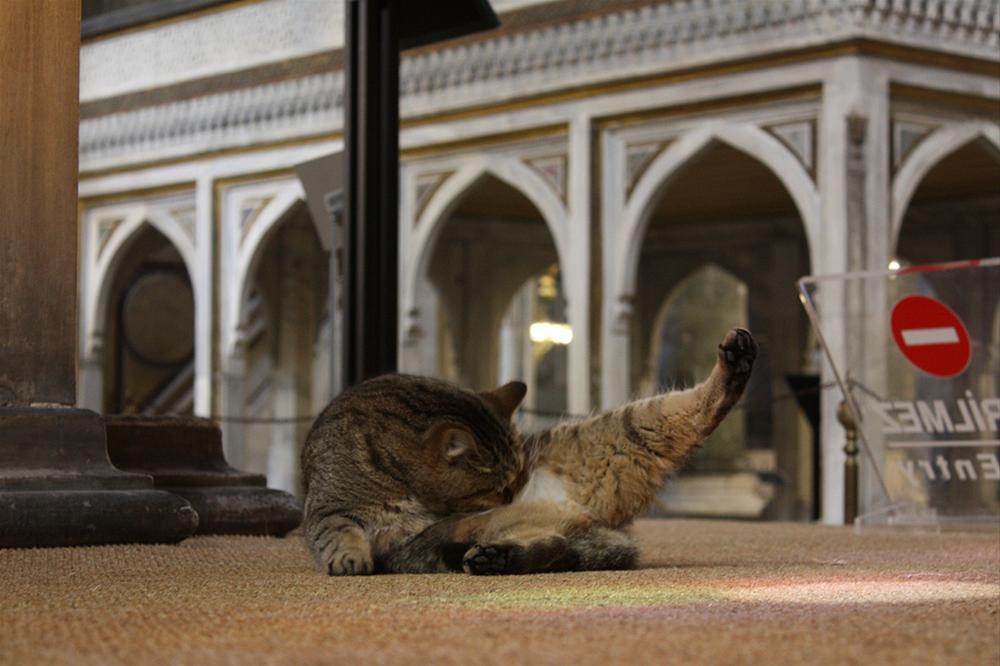
And now, since the time of the Prophet, cats are revered by all Muslims. And not just revered! In their honor were composed poems, purring Sufi cats compared to the performance of zikra - rhythmic repetition of the name of the god, because of what the mustached-striped used in hospitals, believing in the healing power of their purring. Cats were even set an example for other Muslims.
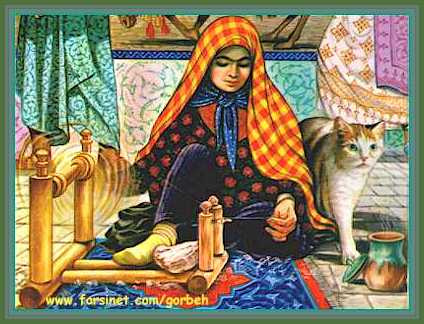
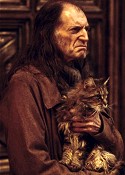 Sufi legends also talk about the cat of the sheikh, who helped teachers to put things in order in school (what is not the prototype of Mrs. Norris from Harry Potter?). Once this cat sacrificed himself to save the dervishes. Another sheikh, Abu Bakr al Shibli, after his death, appeared in a dream to one of the disciples and told that he was in paradise. However, he was not so fond of religious zeal. Allah said to him: "Do you remember the cold snowy day in Baghdad, when you wandered, wrapped in a warm cloak, and suddenly met a freezing kitten." You took it and warmed it under the cloak, because of this kitten you are forgiven. "
Sufi legends also talk about the cat of the sheikh, who helped teachers to put things in order in school (what is not the prototype of Mrs. Norris from Harry Potter?). Once this cat sacrificed himself to save the dervishes. Another sheikh, Abu Bakr al Shibli, after his death, appeared in a dream to one of the disciples and told that he was in paradise. However, he was not so fond of religious zeal. Allah said to him: "Do you remember the cold snowy day in Baghdad, when you wandered, wrapped in a warm cloak, and suddenly met a freezing kitten." You took it and warmed it under the cloak, because of this kitten you are forgiven. "
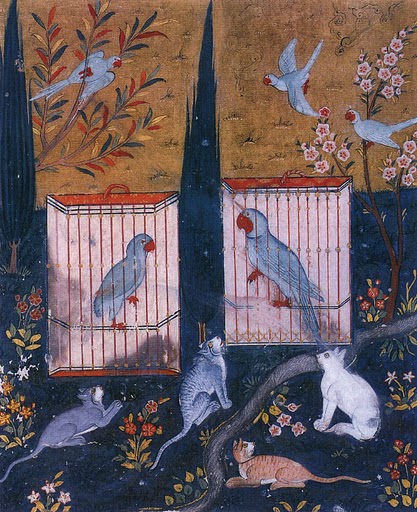 In the 13th century, the Mameluke sultan of Egypt and Syria, al-Zahir Baybars, ordered the establishment of a special "cat's garden", where cats of Cairo could find shelter, food and drink at any time. Since then, this place has repeatedly passed from hand to hand, but the decree of the Sultan was executed scrupulously, and is performed to this day. Every evening, thousands of Cairo cats flock to the garden, where people come with a full basket of food for them. Whatever changes the new century promises, cats should be fed.
In the 13th century, the Mameluke sultan of Egypt and Syria, al-Zahir Baybars, ordered the establishment of a special "cat's garden", where cats of Cairo could find shelter, food and drink at any time. Since then, this place has repeatedly passed from hand to hand, but the decree of the Sultan was executed scrupulously, and is performed to this day. Every evening, thousands of Cairo cats flock to the garden, where people come with a full basket of food for them. Whatever changes the new century promises, cats should be fed.
And today, many Islamic cities are inundated with cats, which they cherish, cherish and let everywhere, wherever this freedom-loving, but surprisingly affectionate being decides to pass. After all, after death, the cat goes straight to heaven, where it can tell you about your kindness to the Prophet.
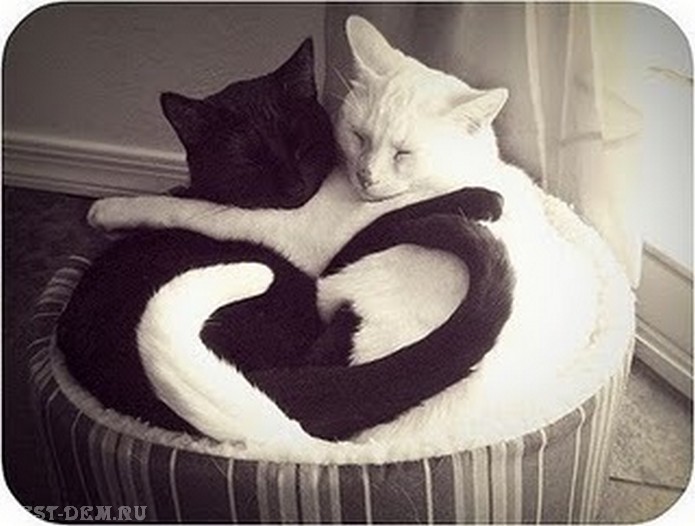 According to Blavatsky, the cat takes the shape of a circle more often than other animals (like a snake curling into a ring) and is therefore a sacred animal.
According to Blavatsky, the cat takes the shape of a circle more often than other animals (like a snake curling into a ring) and is therefore a sacred animal.
Symbols and myths about cats and cats speak of the worship of these animals by the ancient Greeks and Egyptians, the inhabitants of Tibet and Switzerland. The fact that the image of the cat was used as a symbol of freedom and independence, allows us to understand what kind of treasure the owner of this amazing animal owns. Listen with your heart to what your cat or cat is trying to tell you, and you will learn a lot of new and interesting about life, about people and about yourself.

